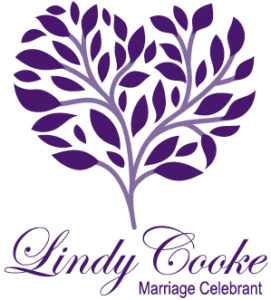Your identity
Your identity is the essence of who you are and sets you apart from every other person. Just like having a unique fingerprint, your identity encompasses individual things like your personality and, most importantly, your name. Although there is no legal requirement to do so, changing your name after marriage is something that most brides (and some grooms) decide to do.
For couples who already have children, it’s an ideal way for them all to share the one surname. Traditionally, brides would take their husband’s surname but, these days, this option is not restricted to brides. A person can choose to take the surname of their husband, wife, or partner without going through a formal change of name process. Some couples choose to combine the two surnames and start afresh.
Sharing the one name may provide an extra sense of unity for some people but, for professional couples such as doctors, lawyers etc., or for those whose surname holds deep meaning, it may make more sense to retain your birth name for business or, indeed, for all practical purposes.
Registering your marriage
After you are married in Australia, your celebrant has 14 days in which to register your marriage. In NSW, this can be done in one of two ways:
If, like me, your celebrant is registered with LifeLink, they will upload the relevant documents to the Registry of Births Deaths & Marriages after your marriage. These documents include your signed and completed Notice of Intended Marriage, the Declaration of No Legal Impediment to Marriage and a copy of your official Certificate of Marriage. In some cases, additional documents such as those associated with a Shortening of Time or a Certificate of Faithful Performance By Interpreter will also need to be uploaded. If everything is completed correctly, the marriage is registered online immediately and your celebrant will receive an email confirming this and advising the registration number for your marriage.
Alternatively, your celebrant will mail the relevant documents to the Registry of Births Deaths & Marriages and the marriage will subsequently be registered. This process may, however, take some weeks to complete.
Changing your name on important documents
Typically, once your marriage has been registered, you are free to use your partner’s surname if you wish. In order to prove you are legally able to change your name on various documents, for example your driver licence, your passport, your bank account/s etc., you will need to purchase a standard Certificate of Marriage from the Registry of Births Deaths & Marriages in the state in which you married. From there, it’s a simple process of producing this document and, over time, changing your name with various businesses and institutions.
As part of the resource folder I lend to my couples, I supply a list of places where people often need to change their name officially. There is no time limit for doing this and, in fact, the process can take a year or more to complete.
Certificate of Marriage
Note: The standard Certificate of Marriage is in addition to the couple’s Certificate of Marriage which your celebrant is legally required to leave with you on your wedding day. While the couple’s certificate is a legal form which only authorised marriage celebrants can purchase from Canprint (the Government printer), because it is handed to you prior to the registration of your marriage, it is not possible to use this document to prove you’re legally married and, therefore, to change your name officially.
If your celebrant is registered with LifeLink in NSW, they will also be able to apply for a certificate on your behalf. This typically occurs when they register your marriage but they are able to access your online record for a period of 8 weeks after your marriage and can order a certificate for you at any stage within this timeframe. The cost for this certificate is currently $60. Your certificate will arrive via registered mail and, as it’s an important identity document, you will be required to sign for it.
Alternatively, you can apply for a standard Certificate of Marriage yourself at any time here.
Changing your name legally by other means
Your name is something you carry with you for life. If, for any reason, you decide to revert to your birth name, you can do so simply by common usage without going through an official Change of Name process. Your birth certificate, therefore, remains a key document for this purpose.
If, however, you decide to change your name because, for example, you don’t like one or more of them and no longer wish to be known by them, the process is different. You will need to apply to the Registry of Births Deaths & Marriages in the state in which you were born to officially change your name on their register. In NSW, the cost for this is currently $195 ($250 for priority service.) Here’s the link to take you to further information on this process.

30/08/2020
077 ~ © Lindy Cooke Celebrant
